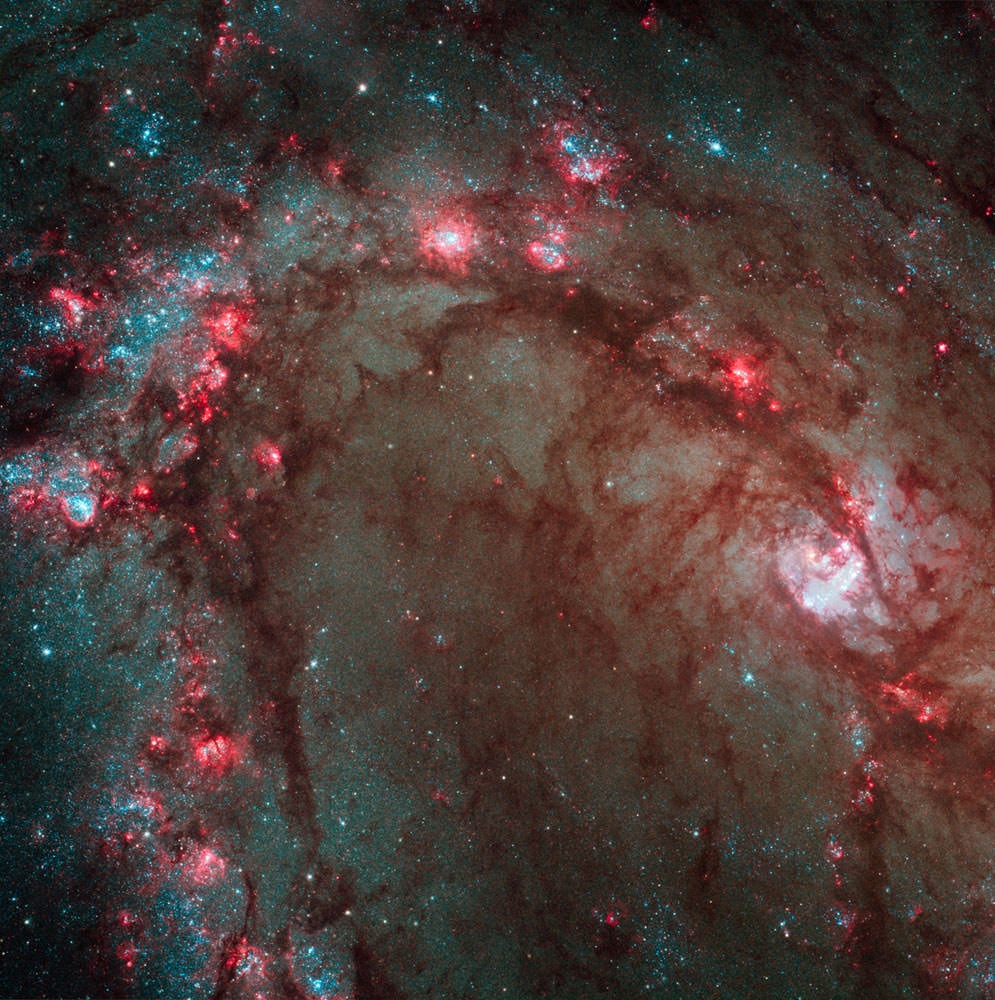It appears Hubble's new Wide Field Camera 3 (WFC3) is working. And how! The new camera installed during Servicing Mission 4 in May has delivered the most detailed view of star birth in the graceful, curving arms of the nearby spiral galaxy M83. Nicknamed the Southern Pinwheel, M83 is undergoing more rapid star formation than our own Milky Way galaxy, especially in its nucleus. The sharp "eye" of WFC3 has captured hundreds of young star clusters, ancient swarms of globular star clusters, and hundreds of thousands of individual stars, mostly blue supergiants and red supergiants.
[caption id="attachment_44229" align="aligncenter" width="580" caption="M83 from ESO and Hubble. Credit for Hubble Image: NASA, ESA, R. O'Connell (University of Virginia), B. Whitmore (Space Telescope Science Institute), M. Dopita (Australian National University), and the Wide Field Camera 3 Science Oversight Committee"]
[/caption]
The image at right is Hubble's close-up view of the myriad stars near the galaxy's core, the bright whitish region at far right. An image of the entire galaxy, taken by the European Southern Observatory's Wide Field Imager on the ESO/MPG 2.2-meter telescope at La Silla, Chile, is shown at left. The white box outlines Hubble's view.
WFC3's broad wavelength range, from ultraviolet to near-infrared, reveals stars at different stages of evolution, allowing astronomers to dissect the galaxy's star-formation history.
Now that's the
birth of a star
!
See more views of M83 and a video at the
HubbleSite
 Universe Today
Universe Today
